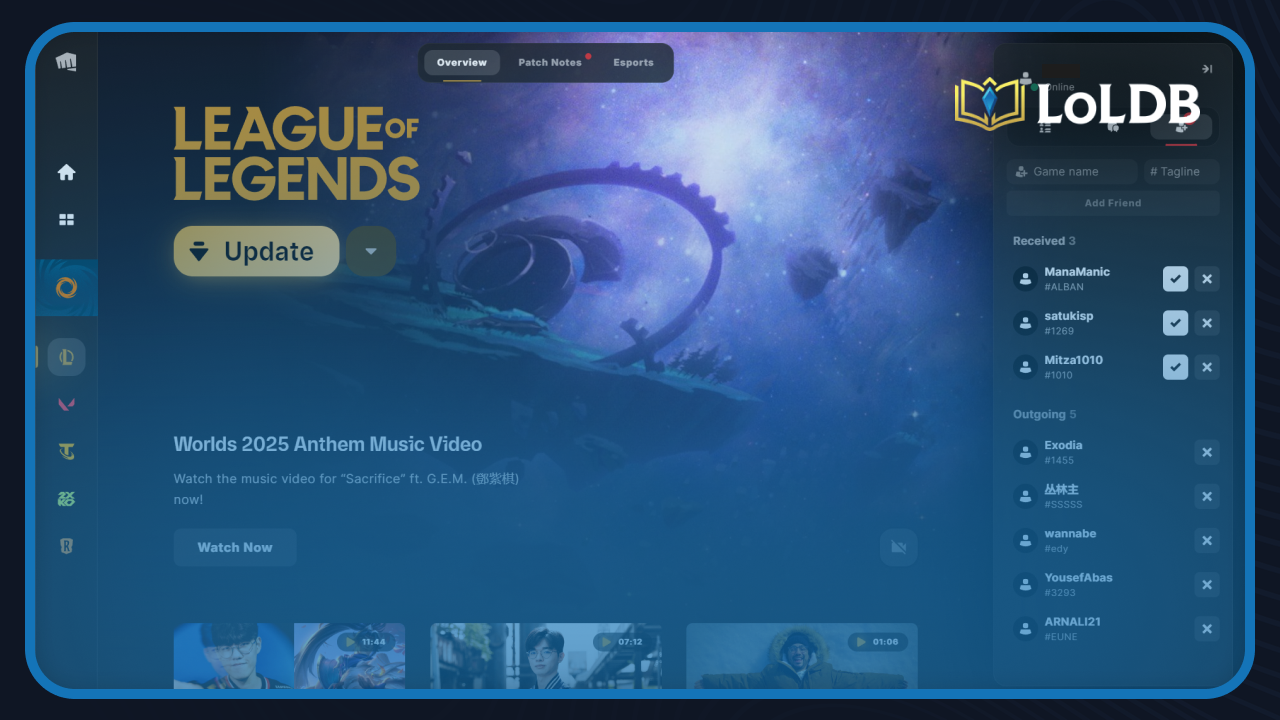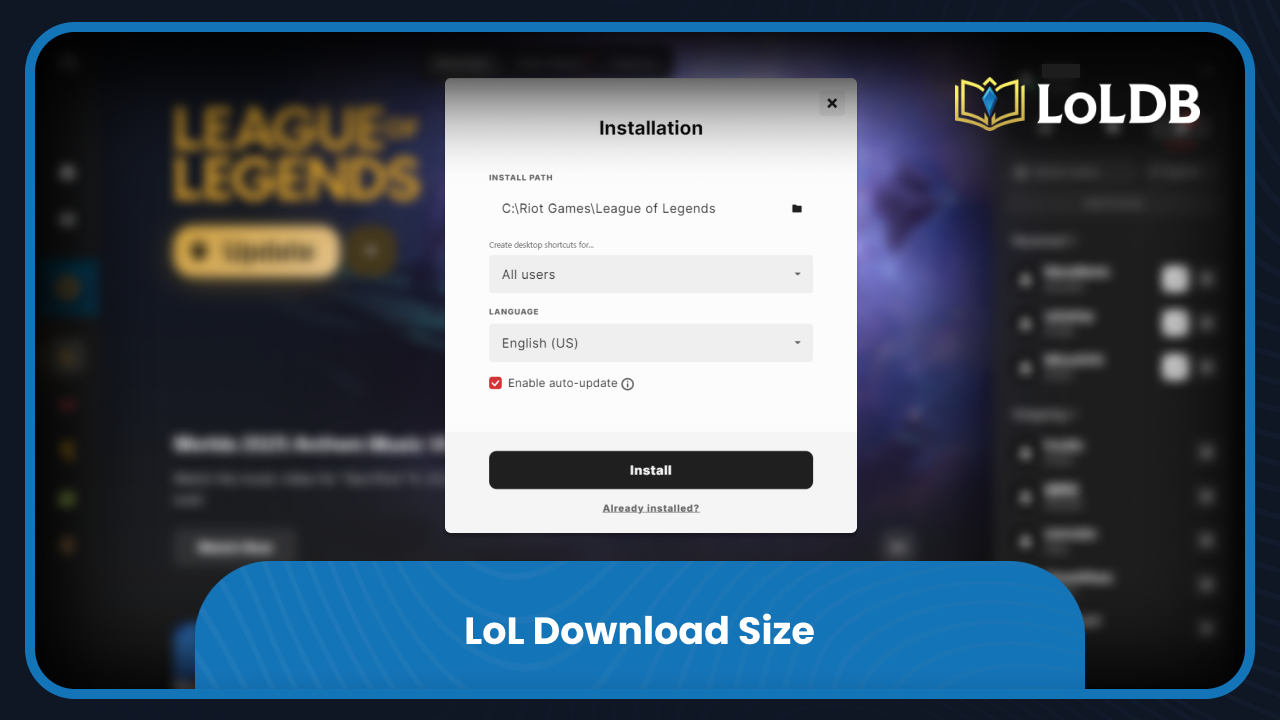How Big is League of Legends? (2025)

League of Legends is one of the most played online competitive games right now, developed and published by Riot Games. The game has been dominating the MOBA scene since 2009, and despite being over 15 years old, it continues to attract new players every single day. The massive success of the Arcane TV show brought even more attention to the game, making it more popular than ever.
Before jumping into the game, players need to know how many GBs League of Legends actually takes up on their system. This is particularly important for those with limited storage space or slower internet connections who want to plan their download accordingly.
In this article, we'll explore everything you need to know about League of Legends download size, including how much space it takes on your PC, the actual download size, and the system requirements needed to run the game smoothly.
LoL Download Size

League of Legends is considered a medium-sized game despite receiving constant updates and including Teamfight Tactics in the launcher. The initial download size is 5.5 GB for the launcher and 22 GB of required files after the launcher is installed, which is manageable compared to many modern games that can exceed 100 GB or more.
Once the download completes and all necessary files are installed, League of Legends expands to 33.1 GB on your hard drive. This includes the base game, Teamfight Tactics, and all the essential game files needed to run smoothly. The difference between download and installation size is normal, as compressed files expand during installation to their full size.
System Requirements
The game's system requirements have increased throughout the years, with the most recent upgrade ending support for Windows 7. Riot Games now requires Windows 10 or Windows 11 to run League of Legends, ensuring better performance and security for all players.
Here's a breakdown of the current system requirements:
Component | Minimum Specs | Recommended Specs |
CPU | Intel: Core i3-530 AMD: A6-3650 | Intel: Core i5-3300 AMD: Ryzen 3 1200 |
CPU Features | SSE3 | SSE4 |
GPU | Nvidia: GeForce 400 Series AMD: HD 6570 Intel: Intel HD 4600 Integrated Graphics | Nvidia: GeForce 560 AMD: Radeon HD 6950 Intel: Intel UHD 630 Integrated Graphics |
GPU Features | DX11-Level Hardware | DX11-Level Hardware |
VRAM | 1GB | 2GB |
Free Storage Space | 16GB HDD | 16GB SSD |
OS Versions | Win 10 (Build 19041+) Win 11 (TPM 2.0 must be enabled) | Win 11 (TPM 2.0 must be enabled) |
OS Architecture | x64 | x64 |
RAM | 2GB | 4GB |
Recommended GFX Setting | Low | High |
Recommended Resolution | 1024x768 | 1920x1080 |
The minimum specs will let you run the game, but you'll experience lower framerates and need to use reduced graphics settings. The recommended specs provide a much smoother experience with higher visual quality and better performance during intense team fights. If your system meets or exceeds the recommended requirements, you'll enjoy League of Legends at its best with high settings at 1080p resolution.
Final Words
League of Legends remains accessible to most PC users with its 33.1 GB install size and modest system requirements. The game runs smoothly on older hardware, though upgrading to the recommended specs will give you a better experience. Make sure you have at least 22 GB of free space for the initial download and a stable internet connection to get started.

